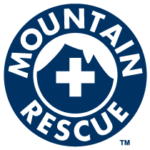Hug-a-Tree and Survive
A program to help lost children survive in the woods
Hug-a-Tree and Survive is a program that helps lost children survive in the woods. It teaches children how not to become lost in the woods, and what to do should they become lost.

Hug-A-Tree and Survive is a great program to share with your family, classroom, guide or scout unit, youth group, or any other community group interested in teaching kids about being safe.
If a child should become lost in the woods, hugging a tree can help them stay safe, and be found. Staying near a tree offers some protection from the elements, and keeps lost children in the same place, which makes it easier for searchers to find them.
The Hug-A-Tree Rules
Hug-A-Tree and Survive emphasizes four key rules to keeping children safe:
- Tell an adult where you are going.
Always tell your parents, or another trusted adult where you are going, who you are going with, and when you will be back. You can do this in person, over the phone, through a text message, or by leaving a note in a place they will see it. - If you are lost, “Hug-A-Tree” and stay put.
A tree can help protect you from the elements while you’re outdoors, and most importantly, keep you in one place. Depending on where you are, there may not always be a tree. Perhaps your “tree” can be a large rock or bench at a park, or a sales counter at a mall. No matter what your landmark is, it is important to stay put, in order to stay safe. - Keep warm and dry.
Temperatures change throughout the day and can drop at night. Even if you are warm during the day, keep your jacket handy for night time. If you get cold, put on an extra layer, pull up your hood, or put on your hat if you have one, tuck your shirt in, tuck pant legs into your socks, and zip up your jacket. You can also keep warm by building a nest to keep you off the ground, or by using an emergency shelter. - Help searchers find you by answering their calls.
Whether searchers are parents, police officers, or SAR volunteers, remember they just want to get you home safely. Answer back to their calls by making noise and signaling, so you can be heard and seen. Make sure to leave lots of footprints and clues, so searchers can follow your tracks to find you.
While designed for the outdoors, these rules are easily transferable to other places including sporting events, shopping malls, public parks, urban areas, and much more! Together, these core points work to ensure kids have the knowledge and training needed to safely enjoy the outdoors, and their communities.
Program History
On a Saturday in February 1981, three brothers were together on Palomar Mountain approximately 60 miles north east of San Diego, California. They were walking on a popular nature trail a half-mile from the camping site where their parents were preparing lunch. Two of the brothers believed that 9-year-old Jimmy Beveridge was racing them back to camp, but he never arrived.
The family spent one hour searching on their own, then contacted a Park Ranger who contacted the Sheriff’s Department. As often happens during February in southern California, the weather was unpredictable. The day had been clear, warm and beautiful. As night fell, clouds and fog moved in and the temperature steadily dropped. By Monday, it was raining almost continuously and fog continued to shroud the mountain top. The helicopters could fly only when the cloud ceiling retreated enough to permit a safe take off. The wind and rain had neutralized Jimmy’s scent, so tracking dogs were of no use. The only hope was to systematically search the entire area, and pray for a visible sign of the boy.
Tuesday morning, the weather broke and the sun came out. There were about 400 searchers on the scene including about 200 Marines. The search was the largest in the history of San Diego County. That afternoon the boy’s jacket and one shoe were recovered and his direction of travel was finally established. Wednesday morning Jimmy’s body was found, curled up next to a tree in a ravine, about two miles from the campground. He had died from hypothermia.
A great anguish overcame many of the searchers for this lost boy and his family. It was a deep and personal feeling that you could see in many faces, on the mountain and for months afterward. There was grief in it, for a young boy who had lost his life, and also a feeling of great wrong that had occurred, with nobody to blame.
Many people were affected by this tragedy and had a desire to prevent it from occurring again. The tragedy gnawed at Ab Taylor, a Border Patrol agent and renowned tracker, and Tom Jacobs, a free-lance writer and photographer. Both had been members of the search team looking for Jimmy. It was the first time in Mr. Taylor’s thirty-one years as a tracker that he had failed to find a missing child alive. The experience prompted him to collaborate with Jacobs, Jackie Heet, and Dorothy Taylor in the development of an educational program designed to teach children, ages 5-12, very basic principles for staying safe in the wilderness. The program derives its name from its primary message: If you are lost, stay put-hug a tree-until help arrives.
In the decades that followed, the original developers of the program along with a number of committed others– including Lillian Taylor, Ab’s wife–trained hundreds of individuals to present the program. Up to this point, the program had enjoyed a significant level of success in the United States. But, in 1999, the program’s concepts were translated into Swedish and the program began to be presented by volunteers in Sweden. In 2001, the right to develop a Canadian version was granted to the RCMP, and an explosion in the number of children receiving the program in North America occurred.

In 2005, Ab Taylor donated the rights to the Hug-a-Tree program and materials to the National Association For Search And Rescue (NASAR). The intent was that NASAR would modernize the program and continue to get the important Hug-a-Tree message out to children. In 2007–after two years of development and using only private donations of time and money–a new video was distributed for use in the program. In 2008, a new presenter trainer video was released that shows anyone how to present the program, and numerous new supporting documents were developed and distributed for use with the program (e.g., activity/coloring book, program handout, presenter manual, etc).
It is the sincere hope of those who have contributed to this project that all children will someday be exposed to the lifesaving principles of the Hug-a-Tree program.



